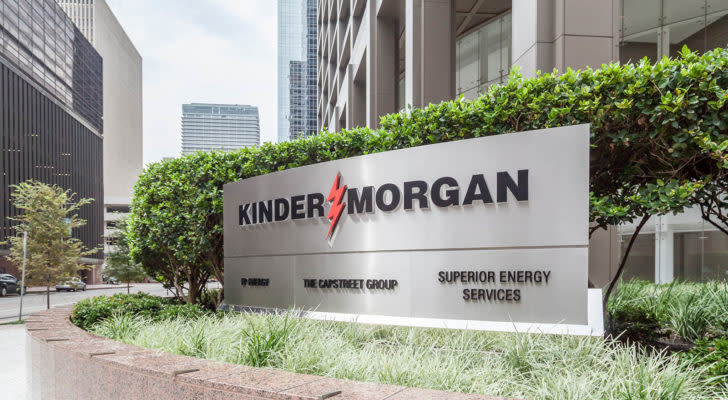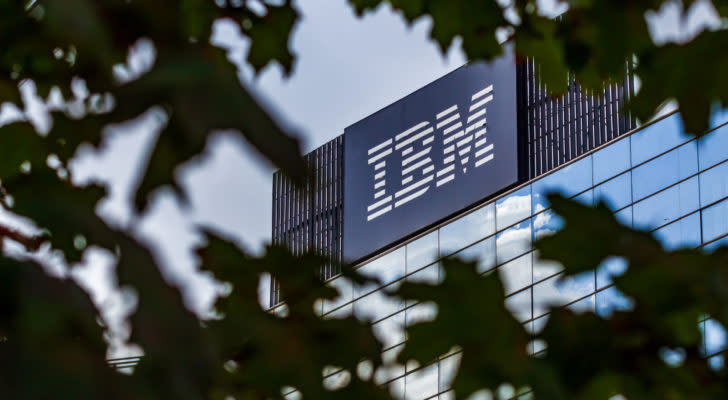7 Cheap Retirement Stocks to Buy Now
Although the wild market gyrations cause much consternation, it also opens doors for cheap retirement stocks to buy now. Ordinarily, these ideas might not attract the attention growth-centric names easily command. However, with the equities sector gradually tilting toward a risk-off profile, retirement-friendly securities should be on your radar.
Fundamentally, the Federal Reserve will see to it that growth-driven ideas will suffer significant challenges. To tackle historic highs in inflation, the central bank committed to a hawkish monetary policy. In short, the incentive for risk-on names will fade as interest rates (borrowing costs) rise. However, established ideas such as cheap retirement stocks to buy may flourish.
Further, if you drill into these ideas, many of them are tied to exciting sectors. It’s just that they usually provide a background role. Or in other cases, these companies quietly benefit from burgeoning macro trends. To take advantage of this present circumstance, below are cheap retirement stocks to buy now.
InvestorPlace - Stock Market News, Stock Advice & Trading Tips
Cheap Retirement Stocks: McCormick & Co. (MKC)

Source: Arne Beruldsen / Shutterstock.com
Frankly, McCormick & Co. (NYSE:MKC) offers an ideal play among cheap retirement stocks to buy. Fundamentally, the company probably couldn’t get more boring if it tried. A manufacturer of spices, seasoning mixes and condiments, it’s easy to take McCormick for granted. Nevertheless, with the brand tied to the broader food industry, it enjoys a certain level of inelastic demand.
Put another way, irrespective of economic factors, humans need to consume a minimum amount of calories. And usually, they prefer those calories to taste good, which is where McCormick comes into the picture.
Though not the most generous source of passive income, McCormick does provide a forward yield of 2%. Also, it features 36 years of consecutive dividend increases. And with a payout ratio of 49.5%, it’s not the greatest figure, nor does the company attract intense unsustainability criticisms.
Finally, the good stuff. Per Gurufocus, McCormick’s business rates as “modestly undervalued.” The key highlight here centers on strong profitability metrics. As well, the company commands a return on equity of 15.4%, ranking better than 79% of its peers. Thus, it’s a solid all-around great idea for cheap retirement stocks to buy.
Vale (VALE)

Source: rafapress / Shutterstock.com
Although metals and mining firms don’t usually make the list of cheap retirement stocks to buy, people should arguably make an exception for Vale (NYSE:VALE). Based in Brazil, Vale is the largest producer of iron ore and nickel in the world, per its corporate profile. The latter commodity presents significant implications because of its integration in electric vehicle (EV) batteries.
While much debate centers on the future of mobility, over time, it’s possible EVs can dominate the transportation sector. Right now, cost structures hurt EV integration, as not everyone can comfortably afford them. However, economies of scale may bring improvements to this problem.
Currently, Vale offers a forward yield of 10.5%, which will undoubtedly attract investors of cheap retirement stocks to buy. In addition, the company’s payout ratio is less than 56%. Therefore, all other things being equal, this should indicate sustainable dividend payouts.
Finally, Vale features a “modestly undervalued” business. Notably, the company enjoys excellent growth and profitability metrics. In addition, its forward price-earnings ratio is 4.9 times, lower than the industry median of 9.1 times.
Cheap Retirement Stocks: Duke Energy (DUK)

Source: Jonathan Weiss / Shutterstock.com
When it comes to cheap retirement stocks to buy, investors should always make room for utilities like Duke Energy (NYSE:DUK). Cynically, bad things happen when people flip the switch and nothing materializes. But on a bigger scale, utilities enjoy inelastic demand. That is, no matter what happens to the underlying product or service’s pricing, users’ consumption behaviors don’t change.
Of course, it’s difficult to say absolutely nothing changes. However, with utilities, households need a baseline of resource consumption to stay afloat. Therefore, companies like Duke Energy will be the last in line in terms of any household budget cuts. Specific to DUK, its exposure to the Carolinas is also attractive because of millennial migration trends.
Presently, Duke offers a forward yield of 4.4%. Although the payout ratio of 70% is on the high side, the company has 17 years of consecutive dividend increases.
Finally, Duke’s business rates as “modestly undervalued.” In particular, investors should consider its profitability scores, such as a net margin of 14.5% (ranked better than 72.5% of the competition.) As well, the company benefits from decent growth trends that should rise higher based on the aforementioned migration trends.
Kinder Morgan (KMI)

Source: JHVEPhoto / Shutterstock.com
A midstream operator, Kinder Morgan (NYSE:KMI) represents an important cog in the hydrocarbon industry. Essentially, it represents the link between the upstream (exploration and production) and downstream (refining and marketing) components. Per its corporate profile, Kinder Morgan owns an interest in or operates approximately 83,000 miles of pipelines and 141 terminals.
Because of the company’s midstream business, KMI may enjoy resilience against economic headwinds. No matter what happens regarding pricing, supply and other dynamics, society needs some place to store critical resources. That’s where Kinder takes front and center stage.
Currently, the hydrocarbon specialist offers a forward yield of 6.3%. It doesn’t have a long track record of consecutive dividend increase, though five years is not nothing. However, the payout ratio of 90.2% is very high.
Still, Gurufocus rates KMI as “modestly undervalued.” Further, the company enjoys solid profitability metrics, including a net margin of 13.8% (ranked better than 68% of the industry.) Finally, Kinder also features a decent growth trek, one that could expand as social normalization trends continue.
Cheap Retirement Stocks: International Business Machines (IBM)

Source: shutterstock.com/LCV
For many years, legacy tech giant International Business Machines (NYSE:IBM) represented an afterthought in the digital innovation space. While its peers pushed into sectors such as cloud computing, IBM still had exposure to legacy hardware businesses. However, that’s a chapter in the past. Today, Big Blue embraces myriad innovations, not only including hybrid cloud initiatives but also the blockchain.
Another reason to consider IBM is that it makes for a great idea among cheap retirement stocks to buy. Presently, the iconic firm offers a forward yield of 5.4%. That’s a stout source of passive income considering the inflationary landscape. As well, IBM enjoys 28 years of consecutive dividend increases. Don’t expect management to give up on this status, even with the high 67% payout ratio.
Now, according to Gurufocus, the tech giant rates as “fairly valued.” Nevertheless, I believe it’s one of the cheap retirement stocks to buy now. For one thing, it has a forward price-to-earnings (P/E) ratio of 12.3 times, well below the industry median of 22.1 times. Also, the company features a return on equity of 27.5%, ranked better than nearly 92% of its peers.
CareTrust REIT (CTRE)

Source: Pavel Kapysh / Shutterstock.com
Structured as a real estate investment trust, CareTrust REIT (NYSE:CTRE) focuses on the broader retirement sector. Per its website, 78% of the company’s operations centers on skilled nursing facilities. 11% focuses on assisted living facilities and independent living facilities. CTRE ranks among the cheap retirement stocks to buy because of its underlying demographic catalyst.
In November 2020, the Pew Research Center reported that the pace of Baby Boomer retirements accelerated in the past year. Later, in November 2021, a different Pew article mentioned that since the coronavirus pandemic, a rising share of older U.S. adults retired. Plus, with baby boomers representing the biggest population increase, the narrative for CTRE will be relevant for a long time.
Presently, Gurufocus rates CTRE as “modestly undervalued.” One of the most notable metrics is that CareTrust has a forward P/E ratio of 10.5 times, below the industry median of nearly 14. Also, the company enjoys decent growth and profitability trends, with the former likely to expand based on the aforementioned demographic realities.
Cheap Retirement Stocks: United Parcel Service (UPS)

Source: sladkozaponi / Shutterstock
If you’re looking for cheap retirement stocks to buy and some potentially robust capital gains speculation to boot, then United Parcel Service (NYSE:UPS) might interest you. To be fair, I understand why some folks might not want to venture into the courier service. With questionable dynamics in the consumer economy – such as soaring inventories of discretionary products – UPS presents significant risks.
Nevertheless, it’s also attractive to the right investor. For instance, the company offers a forward yield of 3.7%, above the industrials sector’s average yield of 2.4%. Also, UPS enjoys 12 years of consecutive dividend increases. Its payout ratio of 48.3% isn’t too shabby, either, under the circumstances.
Finally, Gurufocus considers UPS to be “modestly undervalued.” One of the biggest highlights is the return on equity of 79.5%, ranking better than 96% of its peers. It also indicates a high-quality business. As well, UPS features strong sales metrics, including a three-year book growth rate of 66.9%.
Again, the health of the consumer economy clouds the picture. However, if you can handle the risk, UPS could be an interesting idea among cheap retirement stocks to buy.
On the date of publication, Josh Enomoto did not have (either directly or indirectly) any positions in the securities mentioned in this article. The opinions expressed in this article are those of the writer, subject to the InvestorPlace.com Publishing Guidelines.
A former senior business analyst for Sony Electronics, Josh Enomoto has helped broker major contracts with Fortune Global 500 companies. Over the past several years, he has delivered unique, critical insights for the investment markets, as well as various other industries including legal, construction management, and healthcare.
More From InvestorPlace
Early Bitcoin Millionaire Reveals His Next Big Crypto Trade “On Air”
It doesn’t matter if you have $500 or $5 million. Do this now.
The post 7 Cheap Retirement Stocks to Buy Now appeared first on InvestorPlace.
